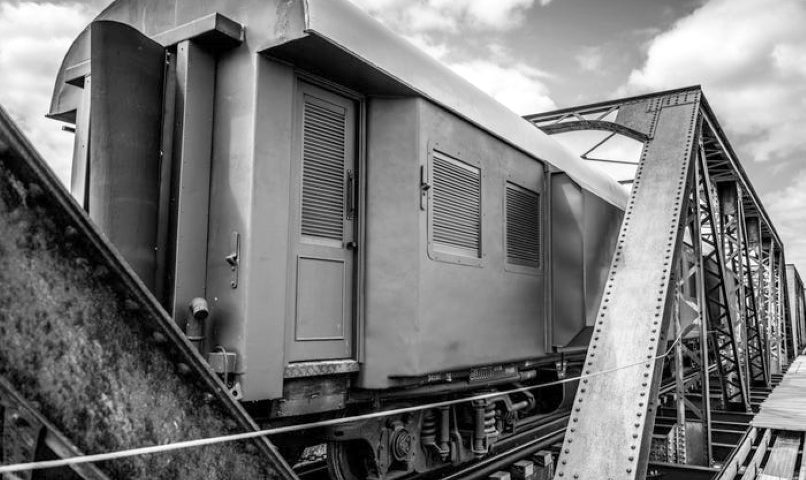
About Gearing
January 13, 2021
Greater Hermanus
January 13, 2021I keep a sharp lookout for news stories that may be part of or related to the history of Hermanus. But I did not pick p on a story in the Business Insider of 15 May 2020. Luckily, my wife, Anina, did see it, because it has the most interesting connection with our town.
An edited version of the media release reads as follows:
Twenty-four hotel rooms built in converted train carriages will open on the historic Skukuza Bridge in South Africa's Kruger National Park either later this year or in early 2021.
The Train on the Bridge consists of 13 train cars from the 1950s and, together with seven Bridge House rooms built on land nearby, will be known as the Kruger Shalati boutique hotel.
The Skukuza Bridge suspended 50 feet above the Sabie River, is where some of the Park's first visitors stayed overnight back in the 1920s.
Before rest camps and tourist facilities existed, visitors would arrive on the Selati Railway, dine by bonfires on solid ground near the Bridge, and then return to sleep in the train carriages. The Selati Railway ceased operations in 1973.
Once renovated, the Train on the Bridge will feature a central lounge car, observation deck, and pool connected to rooms by outside walkways. Dining will take place on land at the Bridge House like it did in the early days of the railway.
The connection with Hermanus arises from the wide-ranging interests and activities of Sir William Hoy, known here as the official who prevented the railway coming to Hermanus and after whom Hoy's Koppie is named. He had an amazing range of interests and the standing and authority to see that his concerns received attention. You can find an article by myself on the Hermanus History Society website (www.hermanus-history-society.co.za), written in 2015 and which gives details about his life and projects.
In this article, the full story of the Sabi Bridge can be found. Herewith an extract:
"In 1922 Hoy became interested in the Kruger National Park – or the Sabi Game Reserve as it was then called. He was consistently trying to increase tourism to South Africa. He had instituted a 'round in nine' tourist train trip, from Johannesburg, through the then Eastern Transvaal and to Lourenco Marques (Maputo). On the return trip, an overnight stop was included at a place in Sabi called the 'Reserve'. It is now known as Sabi Bridge. Travellers were able to leave the train, enjoy a 'braai' around campfires, listen to tales told by the game rangers, and then sleep comfortably on the train.
A history of the Park recounts the response of travellers to the tour:
The passengers declared this the most exciting and exciting episode of the whole tour, and immediately the Game Reserve began to be recognised for the tourist attraction that it was.
Col. Deneys Reitz became an enthusiastic advocate of the National Park scheme, and so did various other prominent personalities such as Sir William Hoy, the General Manager of the Railways. He requested Stratford Caldecott, an artist, to become the Railways publicity agent for the advertisement of the Sabi Game Reserve as a potential asset. Caldecott was an enthusiastic writer and artist. After spending two months in the Reserve, his influence in South Africa was such that soon there was hardly a man, woman or child in the country who had not heard, or read, or seen pictured some aspect of the Sabi Game Reserve.
After this initial contact, Colonel Stevenson-Hamilton (representing the Park, and Hoy representing the South African Railways, continued to work together. In 1927 the SAR and the Park reached an agreement on the overall strategy to attract tourists to the Park. In this agreement, the SAR (through Hoy) undertook to 'provide all transport, by rail and road, and to launch advertising campaigns and catering services and to pay the (Parks) Board a percentage of the income received'. The Board of the Park agreed to build roads, rest camps and other facilities and to provide guides and protection services. Co-operation continued between the SAR and the Parks Board well after Hoy's retirement, but he remains one of those persons who saw the tourist potential of the Game Reserve and acted effectively on it. His backing (and through him the support of the SAR) was decisive in countering the many proposals to deproclaim the Park that were made in the period 1922-1926.

Colonel Stevenson-Hamilton

Sir William Hoy

Typical poster by Caldecott, publicising the Park

Steam train stopping at Sabi Bridge, probably in 1930s

South African Railways carriages, that will be modified for the proposed hotel

Artist's impression of the new hotel, Notice the swimming pool.

Artist's impression of a bedroom on the train

